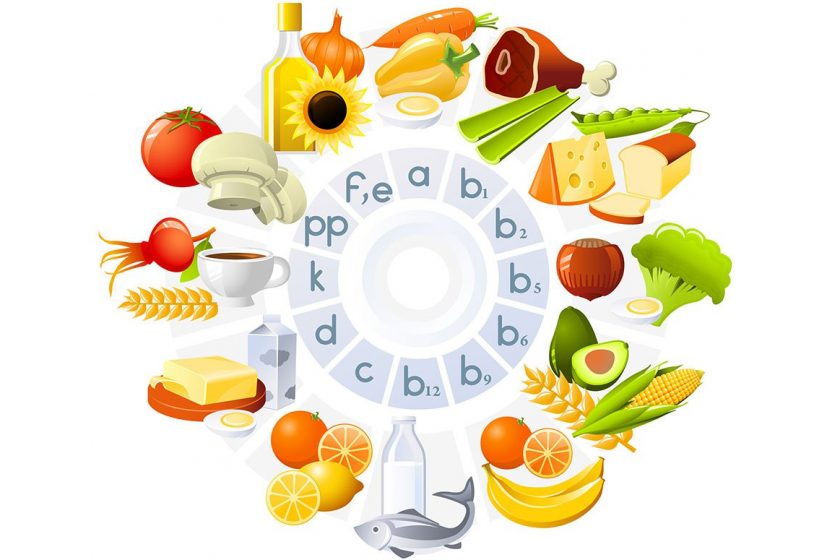Women are often missing out on key nutrients. To play it safe eat a good variety of nutritious foods in addition to your daily multivitamin. When you are planning your menus it’s good to have working knowledge of what your body needs from your food. Bananas, eggs, yogurt, almonds, spinach and more. Delicious and nutritious!
1. Folic Acid
What it is: “Folic acid” and “folate” are often used interchangeably, but they are not exactly the same. Folic acid is the synthetic form of this B vitamin found in multivitamins and fortified foods, while folate is the type found naturally in food.
How much you need: A minimum of 400 micrograms (mcg) per day
Where to find it: Folic acid is found in fortified breads, cereals and pastas, and in multivitamins. Food sources of folate include dark, leafy greens like spinach and kale; nuts; and legumes. Oral contraceptives, antacids, and some medications used to treat type 2 diabetes may inhibit folic acid absorption, so women taking them may need to increase their intake. Talk to your doctor to find out more.
What it is: Calcium is the most abundant mineral in the human body. It forms the basic architecture for bones and teeth.
How much you need: Before menopause, women need 1,000mg calcium per day. After, the recommendation rises to 1,200mg to help offset bone loss that occurs with age. Because the body can only digest so much calcium at one time, divide your dose, consuming no more than 500mg per sitting.
Where to find it: Calcium-rich foods such as low-fat dairy products, almonds, and some greens, including kale and broccoli, are the best sources of calcium, but supplements also can help you meet your daily requirement. “Calcium citrate is more easily absorbed than calcium carbonate, particularly if taken on an empty stomach,” Moores says.
3. Vitamin D
What it is: Although it’s classified as a vitamin, vitamin D actually works more like a hormone in your body. When it’s converted into its most biologically active form―calciferol―by the liver and kidneys, it helps the intestines absorb more calcium from food. That’s why you often find calcium-rich foods fortified with vitamin D.
What it is: The mineral that helps the body’s blood supply deliver oxygen to cells. What it does: Almost two-thirds of the body’s iron supply is found in hemoglobin, the protein in red blood cells that carries oxygen to tissues. For that reason, iron is key to maintaining energy levels. According to the ADA, women report fatigue three times more often than men, and it can be directly linked to low levels of iron. Consistently low levels of iron can cause anemia, a condition experienced by three to five percent of American women.
5. Fiber
What it is: There are two types of fiber-soluble and insoluble. Because both kinds are passed through the body rather than being absorbed into it, not all experts agree that fiber qualifies as a nutrient, per se. But they do agree on its importance in the diet.
How much you need: Aim for 30 grams (g) of fiber per day divided into three segments: 10g at breakfast, 10g at lunch, and 10g at dinner. If you eat little fiber now, start slowly, with around 15g per day, working your way up to 30g over the course of a month; stocking up suddenly can lead to digestive problems, like cramping and constipation.
6. Omega-3 Fatty Acids
What it is: Omega-3 fatty acids, a form of polyunsaturated fat, are one of the “good” fats. They’re part of a group of essential fatty acids, so-called because the body cannot convert other types of fat molecules into the omega-3 form; they can only be supplied by diet.
How much you need: 1.1g per day
Where to find them: Fish are the best source. Wild salmon, halibut, non-white tuna, sardines, herring, and anchovies are high in omega-3s and low in mercury, a neurotoxin fish obtain from polluted water or by eating other fish that contain high levels of it. Dietary supplements are also an option; choose fish oil capsules that are labeled “distilled” to obtain the purest form of omega-3s, Bonci says.
Author: Camille Noe Pagán
Kindly share this story | All rights reserved. This material, and other digital content on this website, may not be reproduced, published, broadcast, rewritten or redistributed in whole or in part without prior express written permission from OSUNDOTLIFE.
Contact: editor@osun.life
WhatsApp: 📲 +2348092333666

